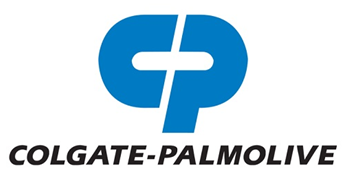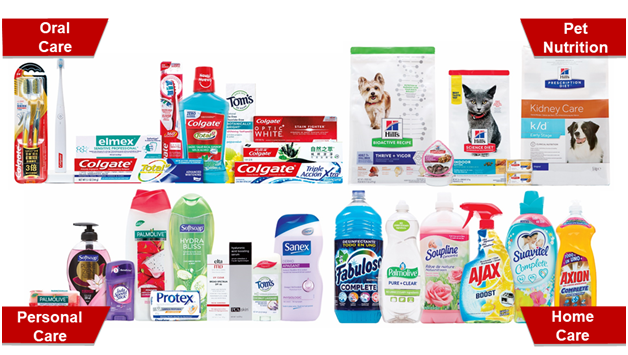How did this brand achieve a competitive advantage even without focusing on the competition? [Tuesdays: Return Driven Strategy]

Miles Everson’s Business Builder Daily speaks to the heart of what great marketers, business leaders, and other professionals need to succeed in advertising, communications, managing their investments, career strategy, and more.
A Note from Miles Everson:
Return Driven Strategy (RDS).
Discussed by Professor Joel Litman and Dr. Mark L. Frigo in the book, “Driven,” this pyramid-shaped framework has 11 tenets and 3 foundations that help businesses achieve true wealth and value creation.
Today, let’s talk about RDS with a focus on Tenet Two—fulfill otherwise unmet customer needs.
Are you ready for today’s topic?
Keep reading to know what it means to be truly competitive and to have a competitive strategy that produces positive results for your brand.
Miles Everson
CEO, MBO Partners
Chairman of the Advisory Board, The I Institute
Return Driven Strategy
“Excellence is not about being better than someone else. Excellence means to function with utmost ease and at your best.”
– Sadhguru, an Indian yoga guru and proponent of spirituality
In a world where many individuals and businesses are motivated by a desire to always win, it’s understandable that some would associate excellence with the concept of being better than others.
However, Sadhguru’s statement above shows that true excellence is not about being ahead of or greater than someone else; it’s about improving yourself each day and functioning with utmost ease and efficiency.
Besides, comparing yourself with others only sets you up for disappointments and frustrations. Everyone has different paths of progress, so you shouldn’t picture yourself in a template that is not your own.
Let’s talk about this in the concept of business strategy—particularly, competition…
According to Professor Joel Litman and Dr. Mark L. Frigo in the book, “Driven,” the problem with competitiveness lies in a tendency towards competition for competition’s sake.
They say this issue manifests when a company does something simply because its competitors have begun doing a particular strategy, campaign, etc.
Here’s the thing: This scenario is no different than an individual who always compares himself/herself with others and does things simply because he/she wants to feel the satisfaction that comes with winning or outwitting his/her rivals.
It’s stressful… and aside from that, it’s unsustainable in the long run!
Competing for the sake of competing usually only distracts you from focusing on the things that truly drive positive returns for your brand.
So, beware! Being competitive is good, but not too much.
What It Means to Be Truly Competitive
Professor Litman and Dr. Frigo say the greatest sales strategy techniques are actually “needs identification” techniques.
This means more than wasting time thinking about or assuming what the competition is supposedly doing, companies focus on how they can identify and address their target market’s needs.
Here are some ways they do that:
- Customer interviews (phone-based or face-to-face)
- Focus groups
- “A Day in the Life” research
- Actual usage observation studies
- The “Why-Axis” analysis (keep asking “why” a customer behaves such way until no questions can be asked anymore)
According to Professor Litman and Dr. Frigo, these are just a few of the creative strategies to discover what it is that clients or customers need. Many consumer statements that came out from these techniques led to great businesses such as Walmart, Apple, Dell, etc.
Here’s another company that does well in terms of its competitive strategy:
Colgate-Palmolive!

Colgate-Palmolive is a multinational consumer products company headquartered in Midtown Manhattan, New York City. It specializes in the production, distribution, and provision of household, healthcare, personal care, and veterinary products.
Here’s a brief background on how the company was formed…
In 1806, Colgate and Company was established as a soap and candle maker in New York City. These were the firm’s primary offerings until 1896, when the company released its first tube of toothpaste product, the Ribbon Dental Cream.
In 1928, Palmolive-Peet, a soap company that specialized in using palm oil and olive oil as key ingredients for its products, bought Colgate and Company.
As a result of the acquisition, the company became known as Colgate-Palmolive, the maker of some of the best-selling personal care products in the world!
Today, the brand’s products are more than just soaps and toothpaste. It also manufactures and sells deodorant, shampoo, mouthwash, dishwashing soap, and even pet food.

Photo from GBIG
Colgate-Palmolive’s products have remained popular throughout the years, and its offerings have become household names themselves.
What enabled the company to achieve a competitive advantage?
First, the brand produces quality products that build a strong identity and gain customer trust.
Colgate-Palmolive has a strong market presence within each market sector that it operates in.
Examples:
- In oral care, the company dominates around 45% of the global toothpaste market, 34% of the toothbrush market, and 17% of the mouthwash market.
- In personal care, the company ranks No. 1 in liquid hand soaps and No. 2 in bar soaps and liquid body cleansing.
- In home care, the brand holds the No. 1 position in liquid fabric conditioners and No. 2 position in hand dishwashing and household cleaning products.
- For pet nutrition, the brand’s Hill’s pet food has strong veterinary approval worldwide and holds market dominance in US veterinary clinics.
Based on these details, you’ll see that Colgate-Palmolive’s dominance in several global market sectors ensures it remains profitable. This profitability is assured due to the company’s strong brand portfolio.
Second, Colgate-Palmolive achieves competitive advantage through effective marketing strategies that help the brand grow a loyal customer base.
You’ll see this in how the company markets its iconic line of toothpaste products, creating dynamic and effective marketing campaigns, and educating consumers through brief and impactful ads.


These ads and campaigns effectively help Colgate-Palmolive in connecting with its target market from all over the world. Thanks to these marketing strategies, the company continues to dominate the markets, especially the oral care sector!
Competitiveness as seen in the Lens of Return Driven Strategy’s (RDS) Tenet Two
We mentioned earlier in this piece that competing for the sake of simply competing is problematic for businesses.
According to Professor Litman and Dr. Frigo, the key is in having a deep commitment to making a difference in consumers’ lives.
Simply said, having an effective competitive strategy is about fulfilling otherwise unmet customer needs (RDS’ Tenet Two) and not just satisfying a particular task or function.
As Professor Litman and Dr. Frigo wrote in “Driven,”
“High-performance firms understand customer needs at a very deep level. In other words, the diagnosis of the customer’s pain is the most important part of selling. The presentation and ‘sale’ of the appropriate medicine to cure that pain is relatively easy if the diagnosis is correct, and immaterial if the diagnosis is faulty or non-existent.”
The bottom line?
The path towards achieving real competitive advantage is through customers and clients, NOT competitors.
Sure, it’s good that you’re aware of what the competition is doing so you can be more keen on how you should promote your offerings, but focusing on it solely is not the path to true wealth creation.
Remember: A robust financial state is society’s reward to businesses. If your brand effectively and genuinely fulfills your customers’ unmet needs through quality offerings, you won’t have to exert too much effort in getting ahead of competitors.
Loyal customers will naturally come to you because they know your offerings have the ability to eliminate their pain points and make their lives convenient.
… and through these loyal customers, your brand can gain an advantage over your competitors without you having to try too hard.
Keep these insights in mind as you plan and create offerings and strategies for your brand!
Function with utmost ease and at your best so you can get good results, and be excellent in fulfilling your target market’s needs and branding your offerings.
Stay tuned for next week’s “Return Driven Strategy” article!
(This article is from The Business Builder Daily, a newsletter by The I Institute in collaboration with MBO Partners.)
About The Dynamic Marketing Communiqué’s
“Tuesdays: Return Driven Strategy”
In the book, “Driven,” authors Professor Joel Litman and Dr. Mark L. Frigo said that the goal of every long-term successful business strategy should incorporate the combined necessity of “making the world a better place” and “getting wealthy.”
That is why they created Return Driven Strategy and Career Driven Strategy—frameworks that were built to help leaders and professionals plan and evaluate businesses so they can also help others achieve their organizational goals and career goals.
The frameworks describe the plans and actions that drive returns for anyone in an organization such as independent contractors, marketers, brand managers, communicators, and other people in any field. These actions lead to the creation of wealth and value for customers, employees, shareholders, and the society.
Every Tuesday, we’ll highlight case studies, business strategies, tips, and insights related to Return Driven Strategy and Career Driven Strategy.
In planning, building, or managing brands and businesses, these strategies, case studies, and guidelines will help you choose what specific actions to take and when to take them.
Hope you found this week’s insights interesting and helpful.
Stay tuned for next Tuesday’s “Return Driven Strategy!”
Cheers,
Kyle Yu
Head of Marketing
Valens Dynamic Marketing Capabilities
Powered by Valens Research
www.valens-research.com




